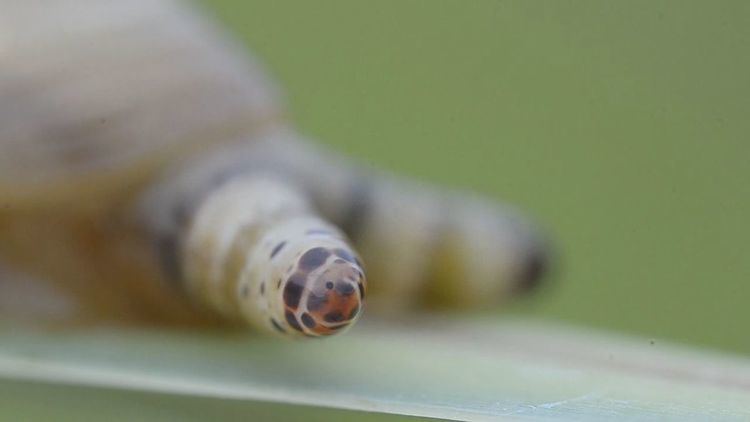Kingdom Animalia Genus Leucochloridium Scientific name Leucochloridium variae Higher classification Leucochloridium Order Strigeidida | Family Leucochloridiidae Subgenus Leucochloridium Phylum Platyhelminthes Rank Species | |
 | ||
Similar Leucochloridium, Digenea, Flatworm, Novisuccinea ovalis, Green‑banded broodsac | ||
The brown-banded broodsac, scientific name Leucochloridium variae, is a species of a trematode whose life cycle involves the alternate parasitic invasion of certain species of snail and bird. While there is no external evidence of the worm's existence within the bird host, the invasion of the snail host involves the grotesque swelling of one or both of the snail's eye stalks as well as the takeover of the snail's brain. This invasion does not cause the snail's death, and snails who are thus invaded sometimes live longer than those which are not.
Contents
The swollen, pulsating eye stalk resembles a maggot, and this is what attracts birds: the bird rips off the eye stalk and eats it and later on the parasite's egg is dropped with the bird's feces. Similar life-histories are found in most species in the genus Leucochloridium including Leucochloridium paradoxum.
The snail regenerates a replacement eye stalk, which also becomes infected by the parasite.
Distribution
North America: Iowa, Nebraska, Ohio and others. Worm eggs unknowingly ingested by the amber snail hatch in the snail's digestive tract. The larva then change into sporocysts, causing drastic mutations in the snail's neural ganglia and physiology. Healthy snails seek darkness to hide from predators, but the infected amber snail moves itself into dangerous open space and light. It is also helpless to retract its newly swollen, pulsating tentacles.
Hosts
Intermediate host of Leucochloridium variae include:
There was no finding of difference in length of shells in parasited and in non-parasited snails.
Hosts of Leucochloridium variae include:
